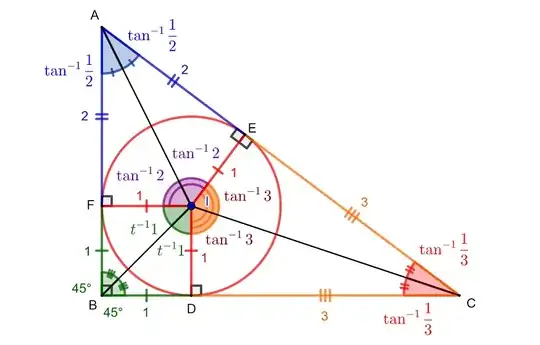Just a comment on the beautiful answer of @Oscar Lanzi:, if we add four strips of width $1$ and length $x$ to a square of side $1$, we get again a cross with an inscribed square, and the equality
$$\arctan \frac{1}{2x + 1} + \arctan\frac{x}{x+1} = \frac{\pi}{4}$$
$\bf{Added:}$ In the picture below, the yellow segments have length $1$, the light blue have length $x$.

$\bf{Added:}$ With the same method, with some care, we can prove the addition formula for the tangent. Indeed, consider two rectangles with sides, $a$, $b$ , and two with sides $t a$, $t b$. (in the picture below, sides $2,5$ and $4$, $10 $) . Arrange them so we from their diagonals we get a rectangle with the ratio of the sides $t$. Then we get the formula
$$\arctan \frac{a}{b} + \arctan\frac{t b - a}{t a + b} = \arctan t$$

In our case
$$\arctan\frac{2}{5} + \arctan\frac{8}{9} = \arctan 2$$
Note: If we start from an arbitrary symmetric cross we might not get a rectangle, but only a parallelogram, so we modified the approach a bit. In general, to get a cross that produces a rotated rectangle, start with a container rectangle and intersect its sides with a central circle.




